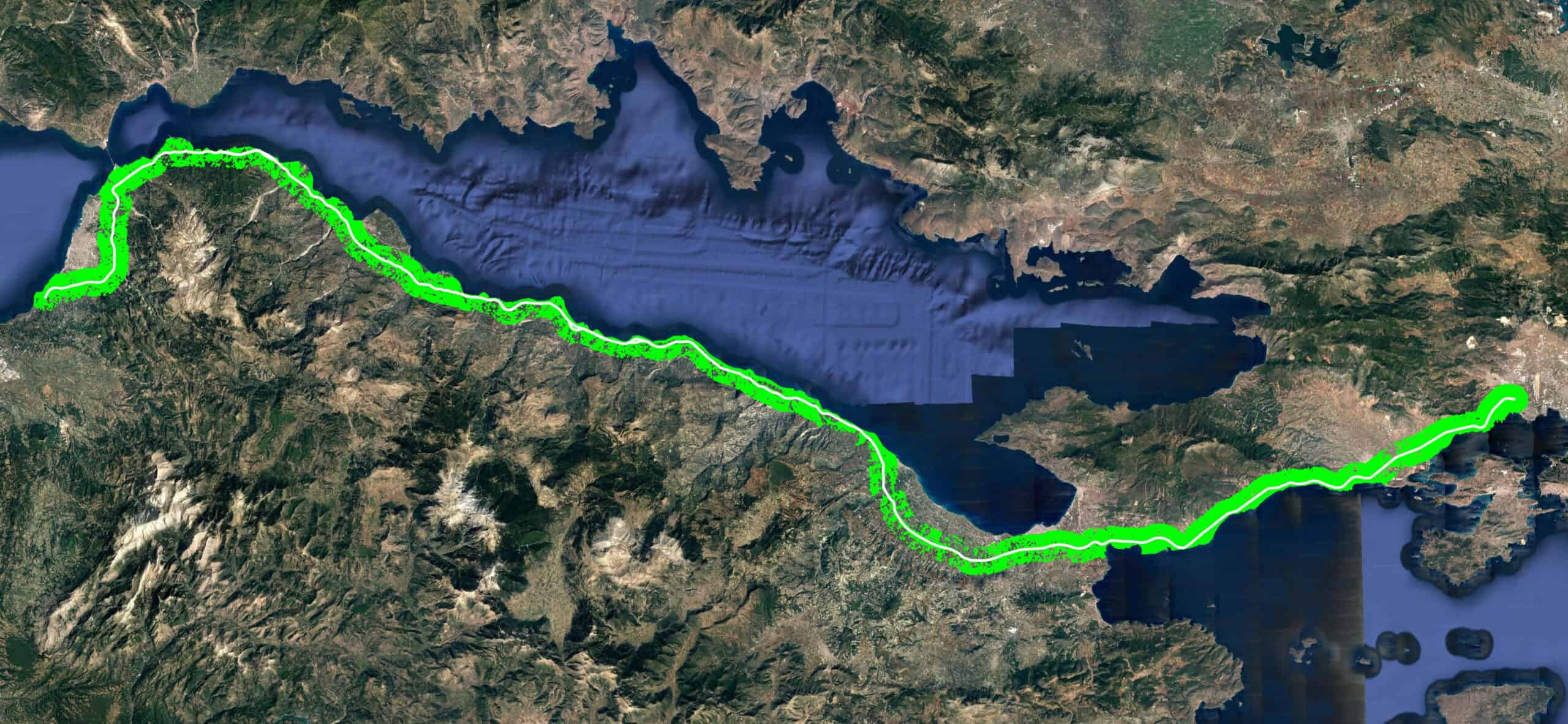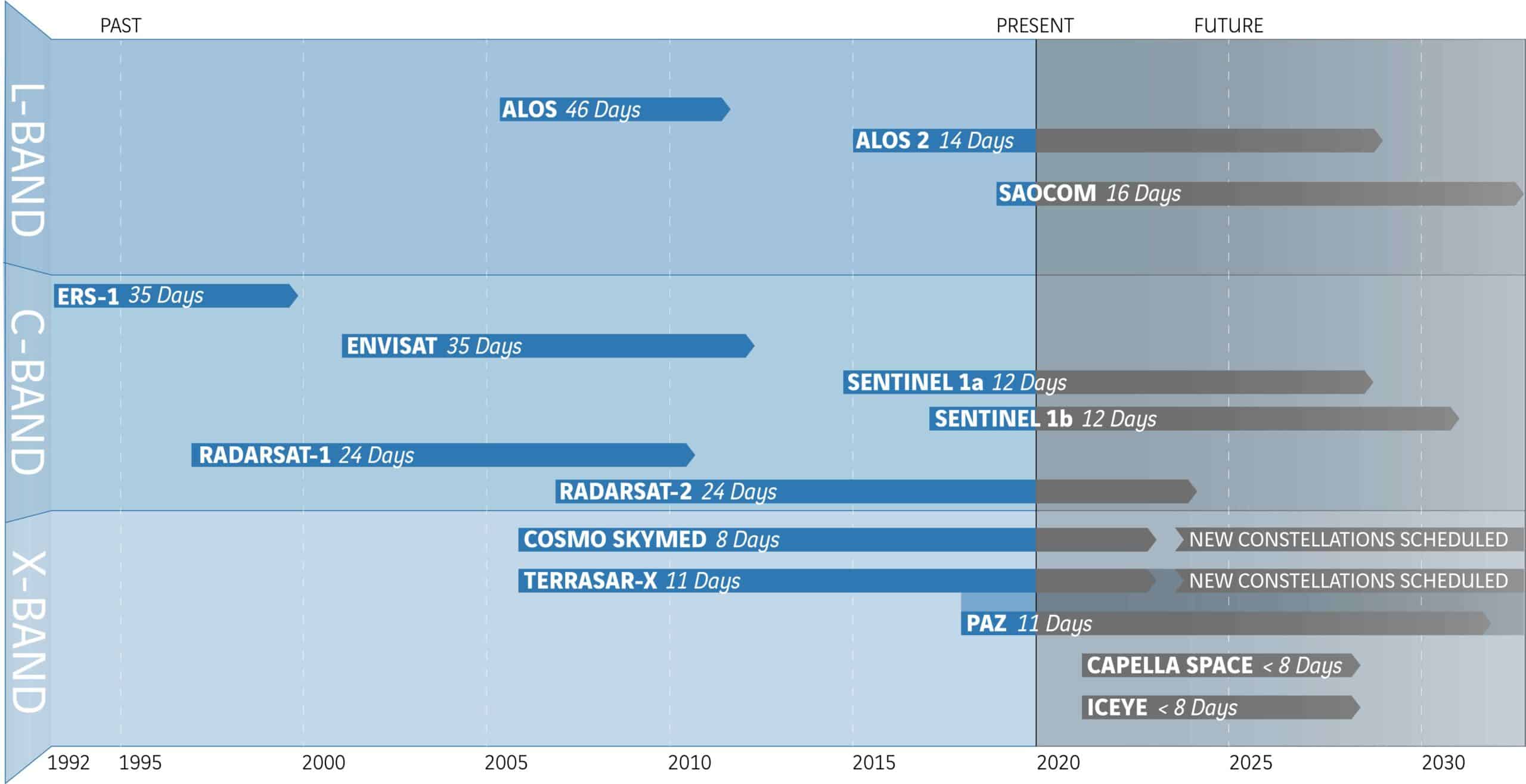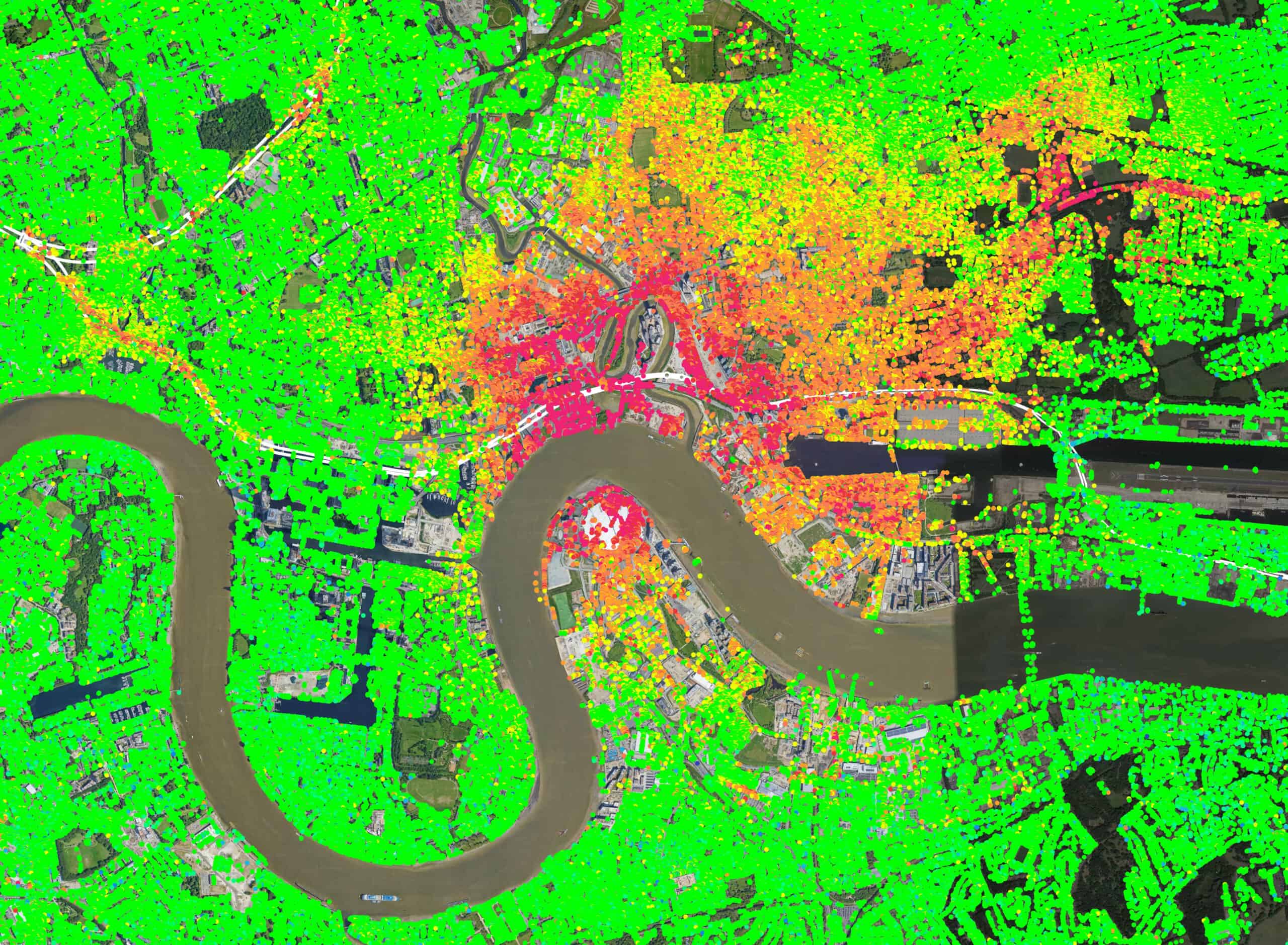Radar satellites have been collecting images of the Earth’s surface since 1992.
It is possible to access these archives and have the data processed to map and measure ground and structural movement from the past.
Atlas InSAR technology can look back and tell where and by how much the ground has been moving across all the areas where images were acquired. It is also the only technology that gives clients an understanding of historical ground and structure motion.
Measuring Ground Motion from Space
Thanks to InSAR technology (Interferometric Synthetic Aperture Radar), the Atlas satellite solution allows millimetric-precision measurements of ground, buildings, or construction sites.
Measurements obtained from satellites cover vast areas without an on-the-ground intervention.
They provide a detailed analysis of the deformations on the terrain, which can be due to works carried out on it or other events to give an understanding of the impacted area.
Historical ground deformation and asset motion can be determined due to SAR satellite images collected since the early 1990s.
Space Agencies (ESA, JAXA, NASA, etc.) launched satellites with SAR sensors, and those satellites were actively acquiring images worldwide. Today, Sixense can download and process those historical images to precisely map and understand past ground and asset behavior.
Moreover, since the last decade, available archives of High-Resolution satellite imagery of major cities have enabled measurement of pre-existing deformation in urban areas or individual structures with high accuracy.
Understanding Terrain Behavior for Project Planning and Design
During the planning and design phase of any type of infrastructure, Atlas historical studies provide a retrospective mapping of deformations affecting the future construction site and a precise analysis of terrain dynamic evolution in time.
Atlas is an added value tool for site selection and characterization prior to the commencement of the works.
Inventory of Critical Spots Along Large Sites
Thanks to the large size of radar satellite images, our Atlas InSAR solution is particularly suited to perform an inventory of critical spots affecting large linear infrastructures of several hundred kilometers, such as railways, highways, or pipelines.
Natural subsidence/heave, active slopes, and areas prone to landslide are easily identified along the infrastructure, and mitigative actions can be implemented.
Risk Analysis, Sustainability, and Urban Planning
Atlas InSAR historical studies can be performed at a regional scale anywhere, but it is often used on large cities and municipalities.
On these occasions, Atlas becomes a strategy tool for local authorities and land developers to understand zones at risk or experiencing vulnerabilities that may affect the city’s growth.
Situations such as subsidence triggered by overexploitation of aquifers, areas of sedimental compaction, coastal erosion, flooding zones that may threaten the integrity of infrastructure and community safety, and more.
Atlas InSAR contributes to the implementation of strategic and sustainable territory development plans.
Optimization and Implementation of an Instrumentation Plan
Atlas InSAR’s historical studies can be used to identify pre-existing ground deformations prior to construction works starting, thus permitting the optimization of any ‘traditional’ real-time or manual monitoring regimes.
Atlas InSAR, combined with Sixense’s expertise in ground Instrumentation, facilitates making tailored designs for each project and implementing an effective and cost-saving ground sensor network.
Legal Claims Protection
Atlas InSAR historical studies make it possible to obtain a past ground motion map beyond the zone of influence (ZoI) and to identify infrastructures and buildings already affected by deformation prior to the start of the works.
In many countries and for the last few years, Atlas InSAR has been used as an efficient tool against unjustified claims, providing unambiguous evidence in legal disputes.
Sixense teams support claims managers in the use of the data.



